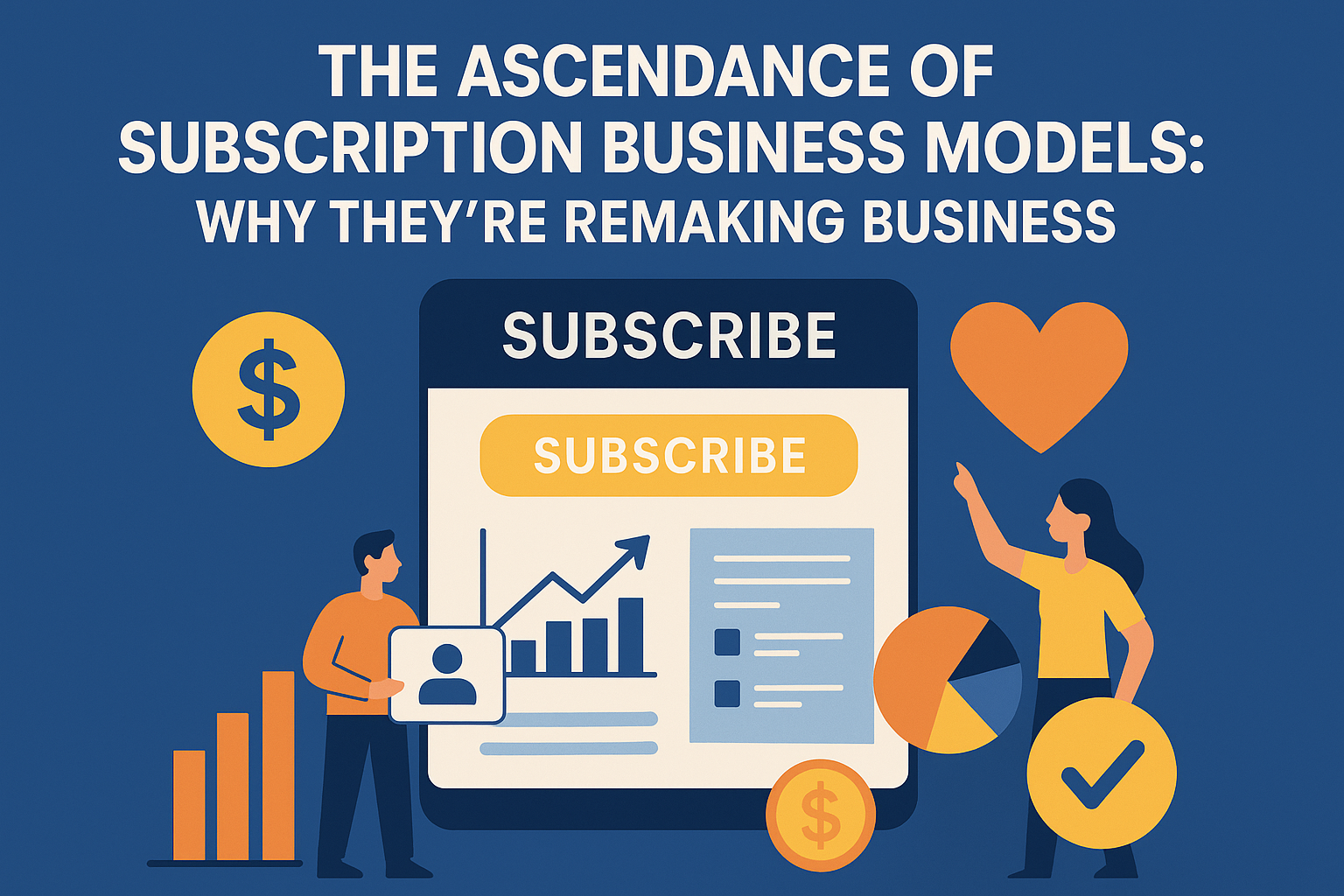The Ascendance of Subscription Business Models: Why They’re Remaking Business
The last decade has seen perhaps the most profound business shift of all: the sheer adoption of subscription models across the board. From entertainment platforms such as Netflix and Spotify to software companies like Adobe and Microsoft, subscription has become the new standard. Now, even sectors such as fashion, fitness, automotive, and healthcare are joining in.
But why is the subscription model so compelling? And why do so many organizations abandon one-off sales in favor of recurring revenue?
📊Predictable and Recurring Revenues
One of the largest benefits for companies is the predictability of recurring revenue. Single-transaction sales models are built on single transactions, which tend to change with seasons, trends, or economic instability. Subscriptions, on the other hand, give businesses consistent, repeating cash flow.
Take the case of Microsoft Office. In the past, customers bought a license once and used it for years. Now, with Microsoft 365, customers pay on a monthly or annual basis, so that Microsoft gets constant revenue with ongoing improvements in its offerings.
Better Customer Relationships🤝
Subscriptions form long-term relationships as compared to one-time sales. Customers do not purchase a product—customers purchase ongoing access to a service. This makes companies think about customer loyalty and satisfaction.
Take the example of Spotify. Rather than selling songs or albums, Spotify offers unlimited streaming of music for a subscription fee each month. To keep customers, it offers personalized playlists, suggestions, and premium features. All this repeated interaction creates loyalty and lowers the chances of customers switching to the competition.
Insights Through Data and Personalization📈
Subscription models also provide companies with access to valuable customer information. Through tracking usage and preference, companies can tailor experiences, predict trends, and enhance offerings.
Peloton, for instance, gathers user activity information to recommend customized workout regimens and monitor progress. By getting more personal and interactive with the customer experience, Peloton keeps users engaged—and subscribed.
💳Lower Barriers to Entry
For customers, subscriptions are appealing since they decrease the initial cost. Rather than a single, big payment, clients pay smaller, recurring fees. This becomes more affordable for high-end products and services.
Adobe’s Creative Cloud is a prime example. Once costing customers hundreds of dollars to purchase, Adobe software now comes through a budget-friendly monthly subscription. Although customers are paying more over time, the reduced entry cost has grown Adobe’s customer base across the globe.
⚠️Challenges and Risks
Though its benefits, the subscription model is not without its problems. Customer churn—the speed at which individuals cancel subscriptions—quickly eats away at profitability. Companies have to continuously provide value in order to retain customers.
A related increasing problem is subscription fatigue. With so many recurring fees—from streaming subscriptions to meal kits—consumers are getting choosier. Companies that do not stand out risk being sliced from monthly budgets.
🚀What’s Next for Subscriptions?
The subscription economy does not slow down. Studies suggest subscription-based companies are growing multiple times more than established companies. The concept is also reaching out to new industries.
Automotive:
Volvo and Porsche provide automobile subscriptions where people pay a monthly fee to drive various models.
Healthcare:
Telemedicine, as well as personalized wellness services, are being marketed as subscription packages.
Retail:
From subscription rental clothing services to expertly curated subscription boxes, retail is testing recurring models to drive loyalty.
In the years to come, we might witness more hybrid models where consumers have an option to own a product or subscribe for access.
✅Final Thoughts
The subscription model is not just a fleeting fad—it’s transforming the way businesses and customers engage. For businesses, it provides stable revenue streams, rich customer data, and more robust relationships. For customers, it provides convenience, flexibility, and affordability.
The catch, though, is maintaining value and preventing subscription fatigue. Companies that can innovate, tailor experiences, and justify their ongoing fees will dominate this new economy.
As businesses change, one certainty remains: subscriptions aren’t merely remaking the future of business—they are the future.
 Helpful Internal and External links
Helpful Internal and External links
Impact of Artificial Intelligence on Small Businesses
How the Ballooning Subscription Economy Reduces Consumer Choice (Axios)
